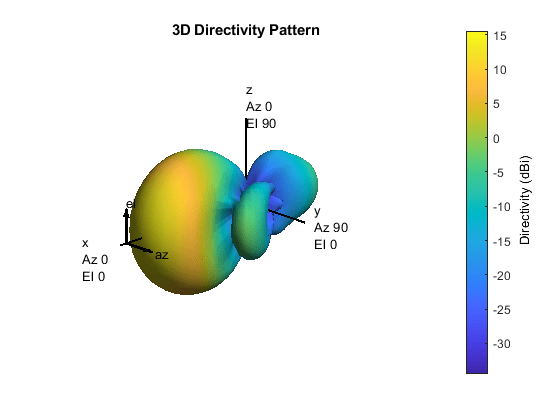Phased Array Design and Analysis
Phased arrays are collections of antennas, microphones, or acoustic transducers arranged in a pattern. Arrays convert signals into radiated energy for transmission to a target. Arrays also convert incoming energy from a source or reflecting object into signals. The performance of arrays in many ways exceeds that of the individual array elements. Phased arrays have three main advantages over individual elements:
Improved spatial resolution — view more detailed resolution when localizing and imaging a target.
Electronic steering — use an array steering vector to increase detection performance in any direction.
Interference suppression — employ advanced suppression techniques, such as jammer nullification, adaptive beamforming, and high-resolution direction finding.
You can use the System objects and blocks in this toolbox to construct phased array systems. These objects and blocks include element models, array design models, and radiation and collection models. With these models, you can simulate radar, audio, and sonar systems. While the toolbox emphasizes phased arrays, you can also simulate systems consisting of single antennas, microphones, or transducers. The toolbox also provides models for transmitting and receiving amplifiers.
Categories
- Antennas, Microphones, and Sonar Transducers
Antennas with isotropic, cosine, sinc, cardioid, Gaussian, and custom response patterns; dipole antennas; microphones with omnidirectional and custom response patterns; sonar transducers; polarization
- Array Geometries and Analysis
Uniform linear arrays (ULA), uniform rectangular arrays (URA), uniform circular arrays (UCA), conformal arrays, subarrays, array response, steering vectors
- Signal Radiation and Collection
Narrowband and wideband signal radiation and collection by phased arrays
- Transmitters and Receivers
Transmitters, receivers, coherent-on-transmit, and coherent-on-receive systems


















